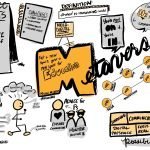Before I weigh in on this topic, I want to remind readers that the majority of public-school students are not white students, so the fact that so many white people are making policy decisions that impact these groups raises concerns. This begs the question: Why in a diverse democracy are the decision makers not including the majority of the students, communities and families whose education is impacted by these curricular choices?
We are a constitutional democracy, so having one group, who is in the minority, make decisions independently of the majority undermines the principles of a democracy. This is not an opinion; it is a fact. Teaching history and social studies has always been debated, so this is just another chapter in our history about the topic. Now the challenge for social studies educators is battling misinformation and erasure of what history is, not just the facts and perspectives of history.
What brings you into this debate?
Professionally, I have been involved in education for almost two decades. I have taught history and social studies in various settings, been a department chair of social studies, and currently oversee social studies instruction as part of my district administrator role. My three graduate degrees and my foray into my Ed.D. in Curriculum, Advocacy, and Policy gave me great theoretical and historical frameworks to understand the history of education in the United States, its impact on marginalized groups, and the systems created to provide protection and support for one group at the expense of the other.
Personally, my perspective provides a broad set of experiences to engage with this topic. On one hand, my small-town roots and being a white male provide me with understanding the social context where conservative political views come from. My undergraduate degree from an evangelical religious institution also provides me with a strong understanding of how these religious ideas interact with political views. On the other hand, my years of urban education, my interracial marriage, and multi-racial family have provided me with lots of areas of reflection and engagement with others from different viewpoints, experiences, and cultural backgrounds. This drives my work and informs my views on the subject. It also leads me to articulate my vision for social studies instruction and how I use this to serve in my role as a district administrator and educational leader.
My vision of social studies instruction is that representation matters, and students should be able to learn and evaluate their perspectives, culture, and backgrounds, and see how this impacts their interactions with others. We must be able to disagree without being disagreeable. It is an essential aspect to being a functional democracy. A major challenge to equity in social studies is representation of groups within the curriculum. In my view, the lack of representation, or misrepresentation, is the biggest social studies challenge in our schools.
What about social studies instruction? How do you collaborate with others on your district team on curriculum equity and how this can help your students and community?
Windows, Mirrors & Doors
Curriculum and instruction include the resources and texts used to instruct and the instructional practices chosen to teach. Our curriculum team believes that instruction should provide students with windows, mirrors, and doors (Bishop, 1990). What we mean by that is that our curriculum should be a window for students to see the world from other perspectives than their own by seeing how other people live in our commonalities and differences. It should also serve as a mirror so they can see themselves, their communities, their history, and their potential futures. In addition, the students should see doors of opportunity within the curriculum as they build up the knowledge and skills to shape and pursue their goals. As the district administrator whose responsibilities include leading social studies, I have the privilege to lead social studies instruction in the district where I can design and support both the social studies curriculum choices as well as the instructional practices and options used for instruction.
From an instructional perspective, we as a district curriculum team have been focusing on building teacher capacity for culturally and linguistically responsive teaching practices (CLR). This includes modeling, designing professional development, and re-teaching it over the past four years. With the pandemic and teacher turnover, we have learned the importance of re-teaching it to new teachers in our beginning of the year New Teacher Network meetings and reinforce it with regular professional development throughout the year. We also highlight specific CLR protocols and instructional strategies in our curriculum maps. This focus on CLR strategies help build teacher capacity on quality instructional strategies and minimize classroom management challenges by giving practical ways to keep students engaged and learning.
From a curriculum standpoint, we make sure to represent various groups, cultures, and voices in our curriculum in our literature and informational text resources. This includes providing specific examples of diverse people as experts or leaders in their field such as a Latina author, African American scientist, the first openly gay lawmaker, a women STEM (Science, Technology, Engineering and Math) leader, etc. Diverse voices are essential to making sure that the curriculum includes windows, mirrors, and doors for our students. Authentic Spanish and English texts are key to proficient reading, writing, and social studies instruction. We make sure that our resources reflect this as much as we can.
Teachers are an essential part of student learning, so I make sure to make very practical, teacher-friendly choices so it is easier for teachers to access resources, curriculum, and instructional strategies. We create curriculum maps with CLR strategies options in each lesson. They are hyperlinked so teachers can click them to review them and see how they can be used. Our maps include page numbers and are linked whenever possible so that our teachers are more efficient in their planning. This is done in collaboration with a group of committed social studies teachers who work every summer to keep the pacing and resources updated and not out of date.
We are replacing our current K-5 social studies curriculum this year, so I have a voluntary committee of educators and school administrators who are evaluating different options with a rubric that includes all our values and principles in our district that are outlined in our 5 Year Strategic Plan. We are not a perfect place by any means, but we have worked hard at learning a common organizational language where we can broadly articulate and align our resources to our goals and feel confident that we are serving our community well be representing these histories and voices in our social studies curriculum.
What are your recommendations on how to move forward with this new educational reality?
First, it is important to acknowledge that most of us are coming to this debate from different perspectives as parents, community members, and other roles that are concerned about students and our society’s future and we want the best education for our nation’s children. We are humans trying to make sure that the things we value and principles we hold are reflected in education. Our concern is out of a place of interest in the future; so, this needs to be stated before we cut each other down.
Second, social studies and history instruction should be focused on civics, and living out “E Pluribus Unum,” out of many, one as marked on our coinage. We have a diversity of opinions and voices on the topic, and we all must compromise on certain things and build consensus on the things that are important, which changes over time as our society does. As I stated earlier, we must be able to disagree without being disagreeable.
Our greatest ideals are being a democracy that represents many voices but can still act on good faith and compassion as well as respect various diverse opinions. Let us all speak with candor and respect, be willing to compromise. Remember that the majority of our students in our public schools throughout the United States are from various ethnic, linguistic, and cultural backgrounds. This means it is important for these histories, cultures, and backgrounds to be included in the ever evolving and diverse history we teach and how these groups impact current events. Also, let us work together to build a broad, diverse tapestry of social studies instruction that validates and affirms these different perspectives and learn how to converse and disagree without being disagreeable.
I think most of us can agree upon the broad foundations of civics and commitment to others in a democratic society, so let us start there. Let us invest in civics and practice disagreeing without being disagreeable, and make sure that our social studies classrooms also teach and respect this ideal. The U.S. Department of Education just allocated in December 23 million dollars for civics education, which is a hopeful sign. Focusing on civics education has also been highlighted in Education Week’s social studies publications, and recently Jacob Goodwin’s opinion piece in Education Week (Goodwin, 2023) summarized what I agree with, which is, “Together we can elevate compassion and reason to improve civic learning and life. Our students depend on it.”
References:
Bishop R. S. (1990). Mirrors, windows, and sliding glass doors. Perspectives, 6(3), ix–xi.
Goodwin, J. (2023, January 25). Teachers Are First Responders in an Ugly Partisan Divide. Education Week. https://www.edweek.org/teaching-learning/opinion-teachers-are-first-responders-in-an-ugly-partisan-divide/2023/01
Micah Miner serves as the District Instructional Technology & Social Studies Coordinator at Maywood, Melrose Park, Broadview School District 89. He believes equity matters, not just globally, but locally and all students deserve equity and access in education and life. Micah has served as a teacher in K-12 settings in both regular classrooms and alternative schools, as a social studies department chair, instructional technology coach, adjunct professor in social studies and instructional technology, and as a school and district administrator. He can be reached on social media @minerclass on Twitter, his LinkedIn profile here, and his email micah.miner@maywood89.org.
- Micah Minerhttps://ace-ed.org/author/mminer/
- Micah Minerhttps://ace-ed.org/author/mminer/
- Micah Minerhttps://ace-ed.org/author/mminer/
- Micah Minerhttps://ace-ed.org/author/mminer/







